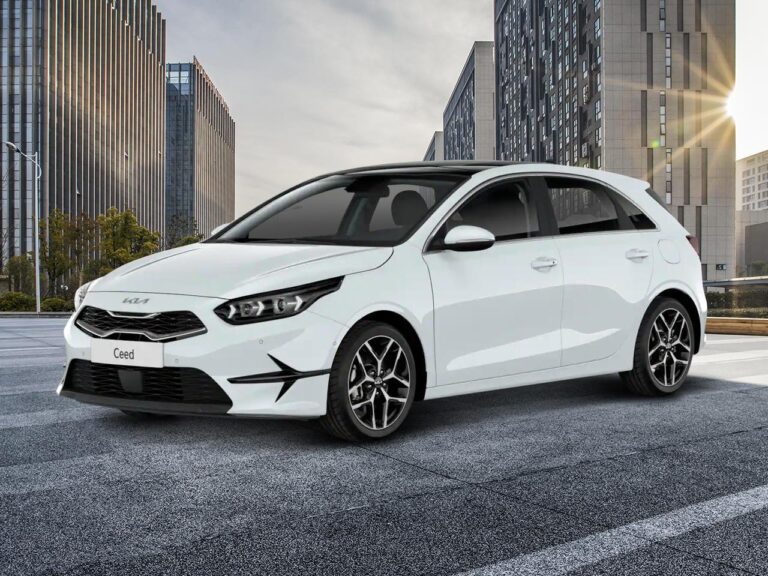Kia Motors has initiated a bold new chapter in its global electric vehicle (EV) strategy, making a decisive push into the challenging Japanese market. Marking a significant milestone, the South Korean automaker has officially launched its first fully electric model in Japan, signaling a “full-scale attack” on a territory long dominated by domestic brands. This move not only underscores Kia’s commitment to electrification but also highlights the intensifying competition in one of the world’s most discerning automotive markets.
Kia Challenges Japan’s EV Market with Bold Entry Strategy
Kia has entered Japan’s notoriously guarded electric vehicle market with a strategy that is anything but cautious. By introducing its first full-electric model, the brand is signaling a bold commitment to disrupt the landscape dominated by established domestic automakers. This entry not only leverages Kia’s cutting-edge EV technology but also capitalizes on growing consumer appetite for sustainable mobility solutions combined with appealing design and competitive pricing.
The launch strategy includes aggressive marketing campaigns, a robust charging infrastructure partnership, and tailored financing options designed to attract both eco-conscious individuals and tech-savvy urban drivers. Key highlights of Kia’s approach include:
- Localized product customization to meet Japanese preferences
- Hybrid sales and service networks ensuring seamless customer care
- Strategic collaborations with local energy providers to boost EV adoption
| Feature | Japan Launch Model | Competitor Benchmark |
|---|---|---|
| Range | 400 km | 350-420 km |
| Charging Time | 45 minutes (fast charge) | 30-60 minutes |
| Price Range | ÂĄ4.5M – ÂĄ5.2M | ÂĄ4.8M – ÂĄ6.0M |
Examining Kia’s Innovative Features and Market Adaptations for Japanese Consumers
Kia’s debut electric vehicle in Japan is more than just a new product launch-it’s a strategic move tailored to suit the distinct preferences of Japanese consumers. Understanding the market’s emphasis on compact design and advanced technology, Kia has integrated a suite of smart features that appeal specifically to this demographic. The EV boasts an intuitive infotainment system compatible with popular Japanese apps and includes enhanced safety technologies such as junction assist and pedestrian detection refined for urban environments. Moreover, its sleek, space-efficient design caters to Japan’s tight urban spaces without compromising passenger comfort. These innovations not only align with local tastes but also reflect Kia’s commitment to blending functionality with cutting-edge technology.
To strengthen its foothold, Kia has adapted its marketing and sales channels, collaborating with local dealerships and offering tailored financing options that resonate with Japanese buyers. Alongside these initiatives, they launched a dedicated customer support program that emphasizes after-sales service, a crucial factor for brand trust in Japan. The table below breaks down how Kia’s key features are customized to the Japanese market compared to their global models:
| Feature | Global Model | Japanese Adaptation |
|---|---|---|
| Vehicle Size | Mid-size SUV | Compact crossover |
| Infotainment | Standard apps | Localized apps + Japanese-language system |
| Safety Tech | Basic collision alert | Junction assist + pedestrian detection optimized |
| Charging Options | Home & fast charging | Expanded network & convenience store partnerships |
| Marketing Strategy | Digital & mass media | Local dealership collaboration + tailored financing |
Strategic Recommendations for Kia to Secure a Strong Foothold in Japan’s Automotive Landscape
Kia’s entry into Japan’s automotive market, especially with its pioneering electric vehicle, demands a tailored approach to negotiate local consumer preferences and entrenched competition. Prioritizing partnerships with Japanese tech firms and charging infrastructure providers will be crucial in establishing a seamless ownership experience. Localized marketing campaigns that highlight Kia’s commitment to sustainability and cutting-edge technology could resonate well with environmentally conscious Japanese buyers. Moreover, expanding after-sales service networks to guarantee reliability and customer trust will serve as a key differentiator against established domestic brands.
Innovating within Japan’s compact urban environment also requires continuous adaptation of vehicle design and features. Offering models specifically optimized for tighter spaces and efficiency could enhance appeal in metropolitan hubs such as Tokyo and Osaka. Additionally, leveraging data-driven insights to tailor electric mobility solutions – from subscription services to smart charging options – will position Kia not just as a car manufacturer, but as a mobility partner. The table below outlines some strategic initiatives Kia should focus on to build sustainable momentum:
| Strategic Focus | Key Action | Expected Outcome |
|---|---|---|
| Localized R&D | Develop EV models suited for Japanese urban landscape | Higher market adoption rates |
| Collaborative Partnerships | Align with local tech and charging networks | Improved charging convenience |
| Customer Engagement | Launch targeted awareness and test-drive events | Build brand loyalty and trust |
| After-Sales Support | Expand service centers and rapid response teams | Enhanced customer satisfaction |
Future Outlook
Kia’s bold entry into the Japanese market with its first fully electric vehicle signals a decisive shift in the country’s traditionally guarded automotive landscape. As the company mounts a full-scale attack on one of the world’s most competitive markets, industry watchers will be closely monitoring how Kia’s EV fares against established domestic rivals. This move not only underscores Kia’s commitment to electrification but also highlights the growing momentum of global automakers eager to capitalize on Japan’s evolving consumer preferences. The coming months will be crucial in determining whether Kia’s strategy can disrupt the status quo and establish a lasting presence in the so-called “forbidden land” of Japanese EVs.




